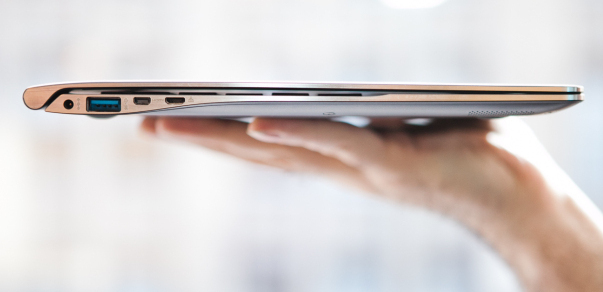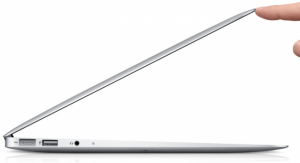

Ready. Set. Go buy ultrabooks and ultrathins; beginning in March or April, most likely. Those powerful and desirable, thin-and-light notebooks will start to see dramatic price drops beginning shortly after you read this brief report. The first batch of that make-you-drool genre could easily see 20 to 30 percent price reductions, as inventory containing Intel's Sandy Bridge chips is cleared out for the newer production-run to be equipped with somewhat updated Ivy Bridge chips.
The industry seems to have been agonizing over whether or not prices for these ultrathin, under-three-pounds laptops would see an Average Selling Price (ASP) below US-$800 in 2012. Did they miss something? Toward the end of 2011 one ultrabook sold for US-$699 on a sale promotion. It seems reasonably apparent that with volume ramping up, a $500 to $600 price-point will be achieved on good quality systems; but that may not be the average sales price for 2012.
Are we there yet?


Acer recently announced the company intends to release new ultrabooks in the $699 to $799 range in 2012, and will focus on actual user experience while offering a wide range of features. Vizio, known for making TVs, said they will disrupt the computer market at a price that does not seem possible, and promised a level of design detail and component quality not seen from other manufacturers.
'Erudite' analysts were saying just a few days ago that ultrathins', ultrabooks' prices would not be attractive enough to create real volume until 2013.
2013 Now Scheduled to Arrive in 4th Quarter 2012
Ultrathins and the Intel branded sub-set of “Ultrabooks” will start gaining touchscreens and gesture-based graphical user interfaces (GUIs), voice-control, and near-field communication (NFC). Sales volume will be accelerated by Microsoft’s introduction of Windows 8 this year, which will include the touch-centric Metro UI designed specifically for mobile devices.
Whatever the prices settle down to in the fourth quarter, expect AMD based ultrathins to be US-$100 to $200 lower in price than those with Intel chip-sets. AMD’s solution is the APU, Accelerated Processing Units containing both a CPU (Central Processing Unit), and a GPU (Graphics Processing Unit), sometimes referred to as a system-on-chip design (SoC). AMD’s graphics processors have, over time, proven better than those made by Intel, although overall their CPUs may be approximately equal, depending on precisely which processors and benchmarks are compared.
It was Steve Jobs of Apple who said he liked the integrated system-on-chip design, and openly stated that Intel’s chips “suck” in reference to graphics performance (See page 493 of Steve Jobs Biography).
AMD's CEO, Rory Read, said the company wants to focus more on ultrathin notebooks, and tablets, and particularly on mainstream and entry-level APUs. RealWorldTech analyst David Kanter thinks AMD's main goal is to increase market share for notebooks, while entering the profitable tablet market.
Surf's Up
Prices are now set to fall sooner than analysts have predicted. You can hear a tidal-wave arriving. The future is now, and coming to a planet near you in 2012.

 Laptop & Tablet Parts
Laptop & Tablet Parts




















